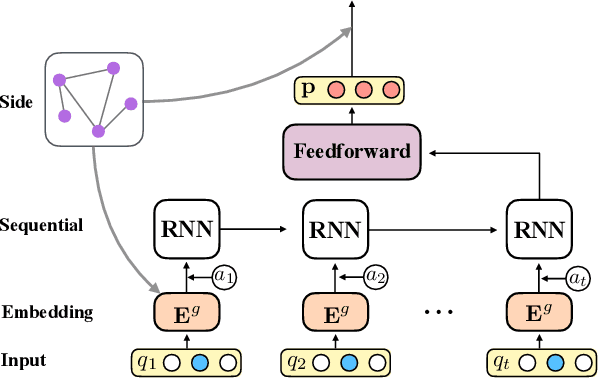Xiaoqin Feng
Spark-TTS: An Efficient LLM-Based Text-to-Speech Model with Single-Stream Decoupled Speech Tokens
Mar 03, 2025Abstract:Recent advancements in large language models (LLMs) have driven significant progress in zero-shot text-to-speech (TTS) synthesis. However, existing foundation models rely on multi-stage processing or complex architectures for predicting multiple codebooks, limiting efficiency and integration flexibility. To overcome these challenges, we introduce Spark-TTS, a novel system powered by BiCodec, a single-stream speech codec that decomposes speech into two complementary token types: low-bitrate semantic tokens for linguistic content and fixed-length global tokens for speaker attributes. This disentangled representation, combined with the Qwen2.5 LLM and a chain-of-thought (CoT) generation approach, enables both coarse-grained control (e.g., gender, speaking style) and fine-grained adjustments (e.g., precise pitch values, speaking rate). To facilitate research in controllable TTS, we introduce VoxBox, a meticulously curated 100,000-hour dataset with comprehensive attribute annotations. Extensive experiments demonstrate that Spark-TTS not only achieves state-of-the-art zero-shot voice cloning but also generates highly customizable voices that surpass the limitations of reference-based synthesis. Source code, pre-trained models, and audio samples are available at https://github.com/SparkAudio/Spark-TTS.
2M-NER: Contrastive Learning for Multilingual and Multimodal NER with Language and Modal Fusion
Apr 26, 2024Abstract:Named entity recognition (NER) is a fundamental task in natural language processing that involves identifying and classifying entities in sentences into pre-defined types. It plays a crucial role in various research fields, including entity linking, question answering, and online product recommendation. Recent studies have shown that incorporating multilingual and multimodal datasets can enhance the effectiveness of NER. This is due to language transfer learning and the presence of shared implicit features across different modalities. However, the lack of a dataset that combines multilingualism and multimodality has hindered research exploring the combination of these two aspects, as multimodality can help NER in multiple languages simultaneously. In this paper, we aim to address a more challenging task: multilingual and multimodal named entity recognition (MMNER), considering its potential value and influence. Specifically, we construct a large-scale MMNER dataset with four languages (English, French, German and Spanish) and two modalities (text and image). To tackle this challenging MMNER task on the dataset, we introduce a new model called 2M-NER, which aligns the text and image representations using contrastive learning and integrates a multimodal collaboration module to effectively depict the interactions between the two modalities. Extensive experimental results demonstrate that our model achieves the highest F1 score in multilingual and multimodal NER tasks compared to some comparative and representative baselines. Additionally, in a challenging analysis, we discovered that sentence-level alignment interferes a lot with NER models, indicating the higher level of difficulty in our dataset.
Deep Knowledge Tracing with Side Information
Sep 01, 2019
Abstract:Monitoring student knowledge states or skill acquisition levels known as knowledge tracing, is a fundamental part of intelligent tutoring systems. Despite its inherent challenges, recent deep neural networks based knowledge tracing models have achieved great success, which is largely from models' ability to learn sequential dependencies of questions in student exercise data. However, in addition to sequential information, questions inherently exhibit side relations, which can enrich our understandings about student knowledge states and has great potentials to advance knowledge tracing. Thus, in this paper, we exploit side relations to improve knowledge tracing and design a novel framework DTKS. The experimental results on real education data validate the effectiveness of the proposed framework and demonstrate the importance of side information in knowledge tracing.
 Add to Chrome
Add to Chrome Add to Firefox
Add to Firefox Add to Edge
Add to Edge